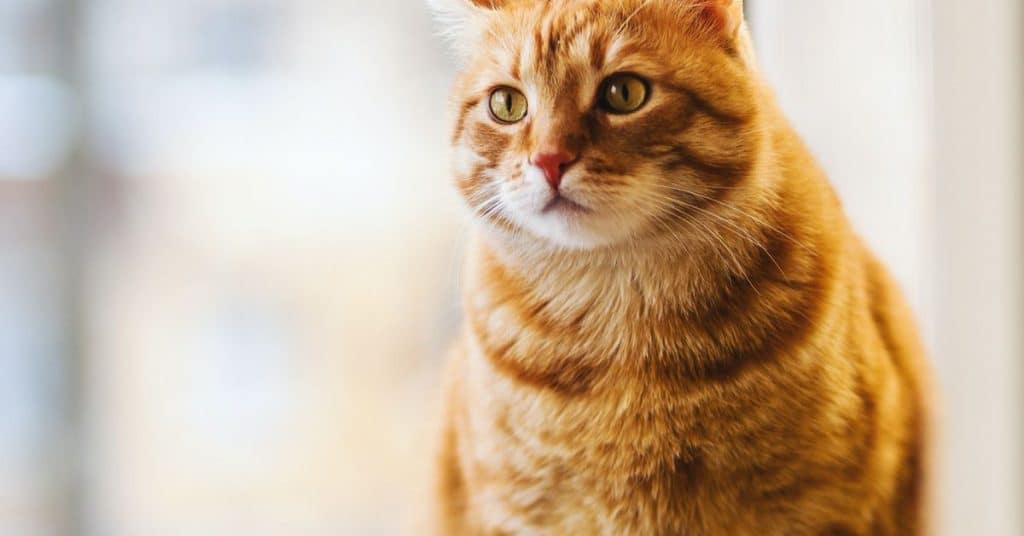
As they are mammals, vitamin D supplements for cats are essential too. Vitamin D is crucial for keeping your cat’s calcium and phosphorus balanced. Additionally, it improves calcium retention, which aids in bone development and nerve and muscle function.
Fortunately, it may be supplied by consuming animal foods containing it. It is classified as a fat-soluble vitamin, which implies that it may be stored in fatty tissue.
Adult cat food should include a minimum of 280 international units (IU) of vitamin D per kilogram, according to the Association of American Feed Control Officials (AAFCO). This figure should not exceed 30,080 IU per kilogram of food.
So, how much vitamin d will kill a cat? Let’s find out;
What is Vitamin D Poisoning?
Vitamin D poisoning, or cholecalciferol poisoning, occurs in cats due to liver and kidney calcium excess. Vitamin D is rapidly absorbed by the body and is immediately deposited in adipose (fat) tissue upon consumption. The liver converts a sufficient quantity of vitamin D to calcifediol, processed by the kidneys and dispersed in the blood plasma.
Vitamin D supplements for cats in the optimum quantity assist the body in controlling the neurological system, muscles, and bone production, as the organs govern a healthy balance of phosphorus and calcium.
However, excessive absorption of vitamin D supplements for cats results in excessive phosphorus and calcium production (hyperphosphatemia and hypercalcemia), resulting in renal failure and cardiac problems.
Vitamins and minerals are necessary for your cat’s bodily systems to work correctly, but an excess of these vital nutrients might have negative consequences. Vitamin D poisoning in cats happens when your cat consumes an excessive amount of vitamin D, resulting in a deadly overdose.
Vitamin pills, rat poison, and some plants are rich in cholecalciferol. Which is a form of vitamin D.
When a cat accidentally consumes excessive amounts of cholecalciferol or when the owner overdoses the cat with vitamin D, the body gets overwhelmed. The once-beneficial vitamin becomes a toxin.
Is Vitamin D Okay For Cats?
The “sunshine vitamin” is a naturally occurring vitamin that the body produces. Cats require vitamin D to operate correctly, which means they do not make enough of it and must obtain it via their diet.
Vitamin D toxicity manifests itself 12 to 36 hours after consumption. Vitamin D deficiency can manifest itself in a variety of ways. Small dosages are generally linked with nausea, diarrhoea, increased drinking and urine, stomach discomfort, depression, and loss of appetite.
Is Vitamin D Toxicity Lethal?
A substance can be poisonous in large concentrations even if there are no indications of toxicity. Even if there are no apparent symptoms, it can become toxic from excessive vitamin D.
Vitamin D poisoning is unlikely to occur, and symptoms may not manifest for months or even years. While cholecalciferol is a “vitamin,” it may be highly hazardous if mistakenly consumed by dogs and cats.
Consumption results in excess calcium being absorbed from the gastrointestinal system, bone, and kidneys.
What are the signs of Vitamin D poisoning?
Vitamin D poisoning in cats, whether via pesticide ingestion, supplement overdose, or accidental absorption, results in a dramatic rise in the feline’s calcium levels. This can result in mineralization (hardening) of the lungs, stomach wall, kidneys, and blood vessels. This abnormally high calcium level is called hypercalcemia.
Vitamin D poisoning symptoms do not develop immediately and may take up to several hours to manifest, as vitamin D supplements for cats cause a gradual increase in the animal’s blood calcium levels. The early indicators of vitamin D deficiency might be imprecise and easily overlooked.
Once the excessive calcium levels have resulted in mineralization throughout the body, the feline will experience renal failure, cardiac difficulties, and internal bleeding. Vitamin D toxicity in cats often manifests clinically between 18 and 36 hours after consumption.
Initially, animals may have vomiting, diarrhoea, and increased thirst. As the calcium level in the blood increases, more significant symptoms such as muscular spasms and fits/convulsions occur.
Initial symptoms of vitamin D poisoning in cats include:
- Polydipsia (excessive thirst)
- Polyuria (excessive urination)
- Anorexia (refusal to eat)
- Depression
The body’s reaction to the excess vitamin D causes the cat’s blood calcium and phosphorus levels to increase within 12 to 24 hours of consumption. Calcium is accumulated in tissues, causing renal failure, discomfort, bloody vomiting, bloody diarrhea, and abnormal heart rhythms. Pets not treated within a few days of a vitamin D overdose will die.
How much vitamin d will kill a cat?
Vitamin D supplements for cats should be ingested at a minimum of 280 international units (IU) of vitamin D per kilogram of food and no more than 30,080 IU per kilogram of food. This is in accordance with The Association of American Feed Control Officials (AAFCO) standards.
What happens?
Small dosages are generally interconnected with nausea, diarrhoea, increased drinking and urine, stomach discomfort, depression, and loss of appetite.
When too much vitamin D is absorbed, it is referred to as ‘hypervitaminosis D.’ It can have several adverse consequences related to an elevated calcium level in the blood due to bone resorption and increased calcium absorption in the intestines.
Soft tissue calcification, cellular degradation, and inflammation are detrimental effects. The most prevalent cause of death in cats and dogs with hypervitaminosis D is chronic renal failure.
Hypervitaminosis D explicitly affects the following:
- Kidneys
- Lungs
- Bones & Joints
- Pancreas
- Heart & Arteries
A more significant dose may increase calcium and phosphorus levels in the body, eventually ending in renal failure.
Treatment of Vitamin D Poisoning in Cats
Vitamin D toxicity in cats is a medical emergency, and your veterinarian will want to start treatment immediately. Vitamin D poisoning is a life-threatening condition that requires prompt medical attention and hospitalization. Indeed, the first 72 hours are critical for saving your cat’s life.
Suppose the chemical containing dangerous quantities of vitamin D was recently swallowed. In that case, your veterinarian might attempt to induce vomiting to eliminate the material from the stomach before it is absorbed.
If the poison has already been taken into the body, the doctor may recommend activated charcoal, which binds to the toxin and prevents further absorption.
Intravenous fluid treatment is frequently used to assist the cat in removing the poison via urine, and blood transfusions may be required for individuals who have lost blood due to internal bleeding.
Intravenous fluid treatment may maintain adequate hydration and correct electrolyte imbalances. Additionally, intravenous fluids are critical in encouraging calcium excretion through the urine.
In extreme cases of anaemia, a blood transfusion may be necessary. Infections caused by secondary bacteria are often connected with vitamin D poisoning. Antibiotics are administered in these instances. If seizures develop, your veterinarian will prescribe seizure medication.
All cats that have been vitamin D poisoned will be hospitalized throughout therapy.
FAQs
Will a vitamin D supplement be harmful to my cat?
While ingesting a few vitamin D pills by accident is unlikely to cause harm to dogs or cats, if a pet acquires access to a pot holding a significant number of tablets, the pet is in danger of vitamin D poisoning.
What is causing my cat to vomit white foam?
Foamy vomit is occasionally associated with other organs, such as the pancreas (pancreatitis). White foam is often produced when the cat’s stomach or intestines become irritated. Inflammation is frequently caused by furballs, parasites, and dietary allergies.
Conclusion
Too much of anything is, of course, terrible. Vitamin D, if consumed through cat food or any kind of nutrition supplies, measurement should be kept in mind.
Cats are inferior at producing vitamin D in response to sunlight exposure. This means their food should contain this vital vitamin.
But remember, too much of it can kill your cat.
